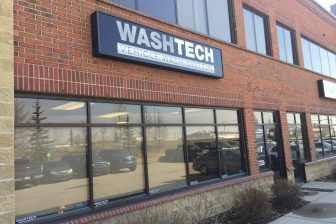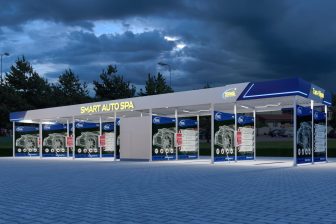
Loogman: ‘Growing to 180,000 washes needed for healthy interior belt’
How many washes do you need to do to justify the investment in an interior cleaning conveyor belt? And how much labour do you need? Ger Loogman of the Dutch Loogman Group has calculated this, based on his own experience.
The Loogman Group has eight car wash locations in the Netherlands. At three of them interior cleaning is part of the programme. The investment in an interior cleaning belt is substantial and the profit for the car wash is in the increase of the number of washings and not so much in the interior cleaning itself, explains owner Ger Loogman. To be “happy”, the possibilities must be there to grow to 180,000 washes on an annual basis. “We are therefore experiencing at first hand that interior cleaning is only reserved for the really big locations”, says Ger. The entrepreneur wants to explain the necessary figures to make the investment worthwhile.
Fantastic achievements
“You now see many concepts and jobs being created and there are fantastic realisations among them. My compliments to Lex Peters of ANAC in the Netherlands for the interior carousel in the city of Arnhem.” Loogman sees that interior cleaning is increasing in popularity. “There is slowly an image that a car wash is not complete without one. Yet I think you have to ask yourself whether that consideration is realistic and wise.”
The Loogman Group recently completed the renovation of their branch in Rotterdam. There you will now find, among other things, a double tunnel wash, an interior belt and an indoor vacuuming area. “Despite the fact that we have eight locations that are all unmistakably Loogman, they are all judged individually,” says Ger Loogman.
Costs
Loogman calls running an interior cleaining belt a business within your business. “In Rotterdam, for example, we are open seven days a week, twelve hours a day. And you have an average of six people on the job. Then you’re talking about adding 26,000 to 30,000 hours of labour, that’s almost fifteen 15 FTEs. Enormous costs.”
At Loogman, interior cleaning is offered in combination with a wash. Around 25 percent of the wash customers also opt for the interior job. “On a good day, that’s maybe 30 percent.”
Profit is in washes
The profit of an interior job is in the washes, Loogman calculates. “That means the number of washes has to increase. To achieve the same return, you have to wash about 35,000 to 40,000 more cars per year. To make a profit, the number has to go up even more. “It means that, in our opinion, you have to be able to grow to 180,000 washes in order to eventually be happy as an entrepeneur.”
To reach that high number of washes per year, a location must have the space. Loogman: “Think of a double tunnel and that has to fit in with the washing potential of the region. And let’s be honest: it is not easy these days to find and keep 15 FTEs, which often means 20 to 25 extra employees, for the job. That also costs extra time and energy. Maybe a beautiful, functional and high quality car wash without indoor cleaning is not so bad after all.”
Also read:
- Indoor vacuuming and interior cleaning biggest trends for western European car washes
- Video: virtual car wash tour at All-in Carwash in the Netherlands



